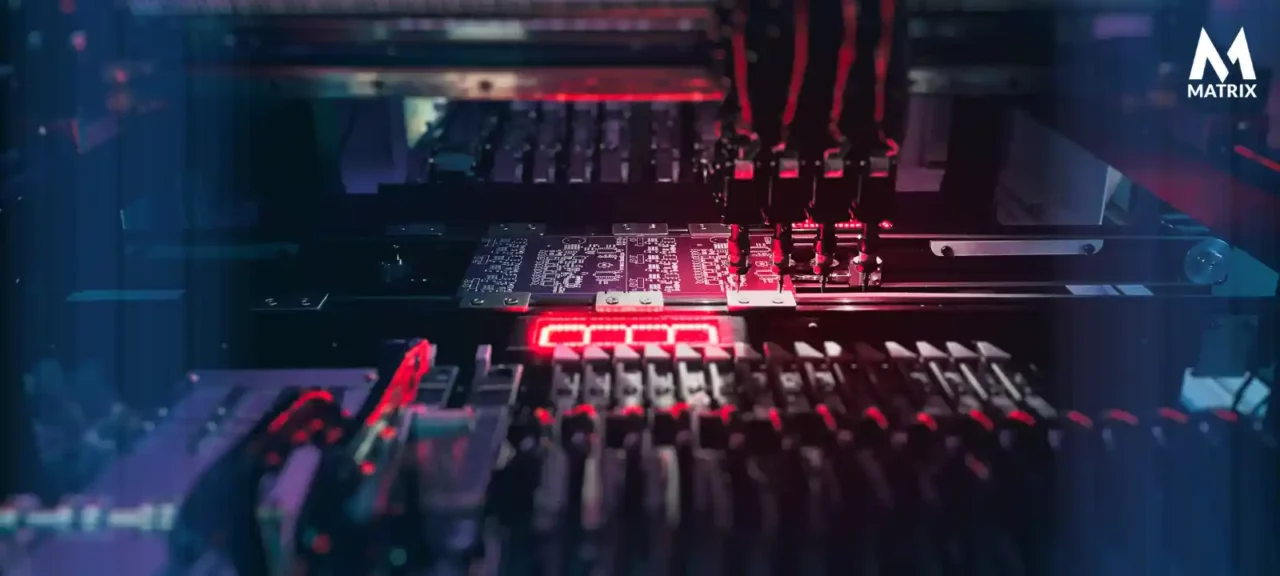Generative AI: Next Technology Growth Cycle
Learn About the Next Technology Growth Cycle: Generative AI
The technology sector is in a state of flux, with rapidly changing trends and new emerging technologies.
Generative AI is the latest trend to gain considerable attention from tech industry watchers, and many have heralded it as the next major wave of digital development that will shape our lives for years to come.
But what exactly is Generative AI, and how can businesses use this technology to stay ahead of their competitors? In this blog post, we explore these questions by delving into the fundamentals underpinning generative artificial intelligence so that CEOs can understand its potential benefits and why it could be another successful innovation cycle shaping business activities worldwide.
Introducing Generative AI – What is it and why should you care
Generative AI is a remarkable technology capable of creating something from scratch. It can produce original content such as music, art, text, and even video by analyzing patterns and learning from them.
Although the technology has been around for a while, its potential has only recently been tapped to the fullest. With generative AI, businesses can reduce costs and increase efficiency by automating tasks that previously required human intervention. For instance, it can generate product descriptions, advertisements, and even entire websites.
It can also be used in the healthcare industry to diagnose diseases accurately and efficiently. In short, generative AI is a game-changer, and if you still need to start exploring its possibilities, you’re missing out.
Understanding the Benefits of Generative AI, from Automation to Cost Savings

Generative AI is a game-changer in the world of automation, providing businesses with numerous benefits that can translate into significant cost savings.
The technology utilizes machine learning algorithms to create near-human-like responses and actions, empowering users to automate repetitive and time-consuming tasks and increasing efficiency and productivity. The ability to reduce manual work and enhance task accuracy has huge cost-saving implications.
By understanding the benefits of generative AI, from automation to cost savings, businesses can unlock their true potential and experience significant growth in their operations. The possibilities are endless, making generative AI an investment worth considering.
AIContentPad – On-Brand Content
AIContentPad offers numerous advantages to on-brand content and corporate governance. It enables companies to streamline communication, improve compliance, and support decision-making processes through efficient and reliable content generation.
AIContentPad provides a scalable solution that helps companies uphold and exceed governance standards. This ultimately leads to better decision-making, stronger regulatory compliance, and enhanced organizational accountability.
Generative AI industry growth phase
The generative AI industry is experiencing a rapid growth phase, with the potential to impact various sectors and transform productivity levels significantly. Based on the search results, the following key trends and insights have been identified:
- Market Growth: The global generative AI market is expected to grow at an impressive compound annual growth rate (CAGR) of 35.6% from 2023 to 2030, reaching USD 109.37 billion by 2030. This substantial growth is driven by rising demand and increasing adoption of AI technology across industries[^3^].
- Economic Potential: Generative AI could increase labor productivity by 0.1 to 0.6 percent annually through 2040. This indicates its transformative potential in streamlining workflows and boosting efficiency.
- Technology Advancements: Key players in the industry are making significant strides, as seen with OpenAI’s launch of ChatGPT
- . Such advancements are likely to drive further innovation and adoption.
However, while the potential for growth and advancement is significant, several factors could influence the trajectory of generative AI’s development:
- Hardware Capabilities: The growth of generative AI is closely tied to breakthroughs in hardware capabilities. As AI models become more complex, they require more computational power. Therefore, advancements in hardware technology will be crucial for the continued evolution of generative AI.
- Algorithmic Research: Continued investment and research in algorithmic improvements can lead to more efficient and powerful generative AI models.
- Regulatory Environment: Regulations around data privacy and AI ethics could slow down the pace of AI development and adoption. Industry players need to address these concerns proactively to ensure sustainable growth.
- Security Challenges: As generative AI becomes more prevalent, it becomes a larger target for cyber threats. Ensuring robust security measures will be integral to the technology’s success.
Given these factors, the growth curve for generative AI over the next decade is likely to see steady upward progression, punctuated by periods of accelerated growth as key milestones are reached. These may include breakthroughs in hardware technology, significant advancements in AI algorithms, and successful navigation of regulatory challenges.
In conclusion, the generative AI industry is poised for substantial growth and transformation over the next decade, driven by technological advancements, increased demand, and significant economic potential. However, the path to this growth will require navigating regulatory, ethical, and security challenges.
Exploring the Use Cases for Generative AI

We are all embarking on a journey to unlock generative AI’s immense potential, broad scope, and extraordinary capabilities. This research represents our latest endeavor to evaluate the profound impact of this new AI era.
Generative AI can revolutionize various functions, including sales and marketing, customer operations, and software development. In doing so, it has the potential to unlock immense value across sectors ranging from banking to life sciences. Our forthcoming sections will present our initial findings, providing valuable insights into this transformative technology.
Artificial intelligence technology has paved the way for groundbreaking advancements in various industries. One of the most exciting developments is the ability to generate creative content using generative AI.
This technology can generate anything from music and art to written content and websites. Imagine generating new and unique designs in seconds or writing content with minimal input!
The potential applications of generative AI are nearly endless, making it a powerful tool for businesses and individuals alike. As more and more industries adopt this technology, we can expect to see even more impressive use cases emerge.
Manufacturing
A Case Study: Google AI in Manufacturing
Google AI has been instrumental in the manufacturing industry, particularly predictive maintenance. Traditional maintenance methods often involve scheduled inspections or waiting for a machine to break down before repair.
However, with Google AI’s machine learning capabilities, manufacturers can now predict potential machine failures before they happen.
Consider the case of a large automobile manufacturer. They employed Google AI to monitor and analyze the performance and health of their factory machinery. The AI system utilized machine learning algorithms to process real-time data from various sensors.
Patterns and anomalies not obvious to human inspectors were identified, and alerts were sent in advance about equipment that was likely to fail. The manufacturer could then schedule maintenance during non-peak hours, minimizing downtime.
Google AI’s predictive maintenance capability resulted in significant cost savings, increased efficiency, and improved productivity for the manufacturer.
It’s a prime example of how AI can transform traditional manufacturing processes into smart, predictive operations. The future of manufacturing with Google AI looks incredibly promising.
Technology

A Case Study: Google’s Generative AI in the Tech Industry
In the whirlwind world of technology, Google’s Generative AI is playing a game-changing role, particularly in software development.
Traditional software development is often time-consuming and complex, involving numerous stages from designing to coding to testing. The entry of Google’s Generative AI in this space has flipped the script entirely, automating significant parts of the process.
Let’s dive into the case of a burgeoning tech startup. They needed help with a limited workforce and a backlog of development tasks for their new app, which could be more typical in the tech industry. The team decided to implement Google’s Generative AI with impressive results.
The AI system could generate chunks of high-quality code based on minimal inputs from the developers. It learned coding patterns and styles from thousands of samples, suggesting code when the developers were stuck and even spotting potential bugs in the code.
It streamlined the entire process, helping to churn out neat, efficient code at a faster pace than manually possible.
By utilizing Google’s Generative AI, the startup expedited the app’s launch in the market, significantly reducing the development time. It also improved the overall quality of the code, reducing the number of bugs and, thus, the need for rework.
As a result, they could focus more on innovation and less on mundane coding tasks. This case study showcases how Google’s Generative AI can revolutionize software development, making it more efficient and less error-prone. It’s a peek into the exciting future of code generation with AI.
Professional services
A Case Study: Google’s Generative AI in Professional Services
In the professional services sector, where time equals money, companies always look for ways to improve efficiency and productivity. Google’s Generative AI is becoming an unexpected hero in this industry, notably in legal services.
Here’s the scoop on a mid-sized law firm that decided to try Google’s Generative AI. The firm needed to grapple with the arduous task of legal document review, an essential process that consumed too much of the attorneys’ precious time.
Enter Google’s Generative AI! The AI system was trained to review and analyze legal documents, learning the particular language, terminology, and patterns involved.
The trained AI could then sift through vast amounts of legal docs, highlighting any issues or potential areas of concern with surprising accuracy and speed.
The effects were a game-changer for the law firm. Reviewing legal documents, which previously took a week, was now being completed in hours.
The attorneys could focus more on their clients and strategy and less on paperwork. Google’s Generative AI significantly improved their operations’ efficiency, leading to more satisfied clients and an improved bottom line.
As this case study shows, integrating AI into professional services has the potential to redefine traditional workflows and enhance service delivery, opening up a world of possibilities for the industry.
Healthcare

A Case Study: Google’s Generative AI in the Healthcare Industry
In the complex and critical world of healthcare, Google’s Generative AI is making significant strides, notably in medical research and diagnostics.
Consider the scenario of a leading healthcare research institute. They deal with enormous medical data, spanning patient records, scientific articles, and experiment results. The sheer volume and complexity of the data made it challenging to manually spot patterns, trends, and correlations.
The institute turned to Google’s Generative AI for a solution. The AI system was trained on thousands of medical documents and research papers, learning to understand medical jargon, complex concepts, and intricate patterns.
It could then sift through massive amounts of data at an unprecedented speed, generating insights that could lead to new research directions or potential diagnostics.
The impact was transformative. An analysis process that used to take months was now completed in mere days. The AI system could identify patterns and correlations not easily noticeable to human researchers, driving innovation and breakthroughs in their work.
This case study underscores how Google’s Generative AI can revolutionize data handling and analytics in the healthcare sector, leading to faster, more accurate research and potentially life-saving discoveries. The future of healthcare with Google AI is not just promising—it’s exhilarating!
Write a use case for Google’s generative AI in the healthcare industry to show current situations, solutions, and results.
Examining the Challenges of Implementing Generative AI
As technology advances, the potential applications for artificial intelligence (AI) seem infinite. One area of AI that has garnered much attention in recent years is generative AI—a form of machine learning in which computers are trained to create content, such as images or text, on their own.
While generative AI’s potential benefits are clear, implementing this technology has many challenges. From ensuring the accuracy of generated content to dealing with ethical considerations, many moving parts are involved in successfully leveraging generative AI.
Acknowledging and understanding these challenges in their entirety is important to fully capitalize on this technology’s capabilities.
Analyzing the Impact of Generative AI on Businesses and Consumers
The rise of generative artificial intelligence (AI) has been an innovative game-changer for businesses and consumers. With the ability to imitate human creativity, generative AI can revolutionize how we think about and approach problem-solving.
The impact of generative AI has been significant, from automating tasks to predicting customer preferences. Businesses are optimizing their operations and finding new ways to engage with consumers while consumers are enjoying personalized experiences that cater to their individual needs.
However, as generative AI technology continues to evolve, important questions must be considered, such as potential ethical issues and the need for human oversight.
Nevertheless, there is no denying that the impact of generative AI is fascinating and far-reaching, with implications that are only beginning to be fully understood.
How Companies are Leveraging Generative AI to Support Future Growth
As technology advances and changes how we live and work, more companies are finding innovative ways to stay ahead of the curve.
One such strategy is leveraging generative AI to support future growth. With the help of this cutting-edge technology, businesses can quickly and efficiently analyze vast amounts of data to identify patterns and glean insights that would be impossible to detect through manual means. This can improve decision-making processes, streamline operations, and enhance customer experiences. By embracing generative AI, companies can position themselves for long-term success and stay competitive in an ever-evolving digital landscape.
The last decade has witnessed unprecedented growth in cloud-based software, smartphone adoption, and generative AI.
The convergence of these technologies has transformed many industries, including marketing. In this report, we’ll analyze their growth rates and make projections for their future.
Cloud-Based Software Growth
The global cloud computing market size was valued at USD 569.31 billion in 2022 and is projected to grow to USD 2,432.87 billion by 2030.
This represents a Compound Annual Growth Rate (CAGR) of about 16.4%[^7^]. Factors such as cost-efficiency, scalability, and flexibility have driven its growth. The chart below illustrates the year-by-year growth of cloud computing:
Cloud Market Size (USD Billion)
2022, $569.31B
2023, $677.95B
2030, $2,432.87B
Smartphone Adoption Growth
Unfortunately, I don’t have data on the growth rate of smartphone adoption over the last ten years. However, the trend is undoubtedly upward, driven by increased internet penetration, falling device costs, and growing digital literacy.
Generative AI Growth
As per previous analysis, the global generative AI market is expected to grow at a CAGR of 35.6% from 2023 to 2030. This growth is fueled by rising demand across industries, advancements in hardware capabilities, and breakthroughs in algorithmic research. Here’s the projected growth:
Generative AI Market Size (USD Billion), 2023, TBD and 2030, $109.37
Impact on Product Marketing
The growth of cloud-based software, smartphone adoption, and generative AI presents significant opportunities for product marketing. Cloud-based software provides scalable data storage and analytics solutions that are critical for personalized marketing.
The rise in smartphone usage means marketers can reach consumers directly and in real time. Meanwhile, generative AI can help automate content creation, making marketing more efficient.
In conclusion, the upward trends in these technologies point towards an increasingly digital, mobile, and AI-driven future for [product] marketing. Marketers who can effectively harness these tools will be well-positioned to drive engagement and sales.
Generative AI is quickly becoming one of the most anticipated and active technology growth cycles. It’s clear why: Generative AI can automate processes, reduce costs, and open up new use cases.
However, its true value lies in how it can help businesses meet their goals faster than ever before and stay ahead of the competition with its wide-ranging capabilities.
While implementing Generative AI can present challenges, such as a lack of resources or the inability to integrate with existing systems, these can be addressed with the right mindset and strategy.
Companies that embrace Generative AI have a lot to gain, and now more than ever, they have access to the necessary tools and solutions.
At AIContentPad, we specialize in creating advanced content writer assistants that augment any editorial workflow and significantly accelerate ROI per writer.
Whether you’re starting your journey or looking for ways to optimize your current setup, AIContentPad is here to help you unlock a better workflow experience through Generative AI technology. Try it today for free!
MatrixLabX Products
Three groundbreaking AI agents from MatrixLabX are shaking up the marketing industry: AI ProdPad, AI BrandPad, and AI ContentPad.
These innovative platforms are transforming the way businesses approach marketing. AI ProdPad streamlines product strategy with data-driven precision, AI BrandPad elevates brand identity with cutting-edge AI-driven insights, and AI ContentPad revolutionizes content creation, delivering tailored advertising solutions faster than ever.
Together, these AI agents are redefining the future of marketing, making MatrixLabX a name to watch in this rapidly evolving landscape.
General FAQs
Why is generative AI essential for gaining a competitive advantage?

Generative AI is a game changer when it comes to enhancing business competitiveness. It enables businesses to automate tasks, streamline processes, and generate innovative solutions, making operations more efficient and cost-effective. By analyzing vast amounts of data, generative AI can uncover hidden patterns and insights, inform strategic decision-making, and pave the way for future growth.
How does generative AI help businesses stay ahead of the curve?

With the ability to generate creative solutions and predict future trends, generative AI allows businesses to stay one step ahead of the competition. It can also offer enhanced customer experiences through personalized recommendations and services, fostering customer loyalty and driving business growth.
Can generative AI help businesses innovate faster?

Absolutely! Generative AI can significantly speed up innovation by automating and enhancing tasks such as data analysis, content creation, and problem-solving. This allows businesses to quickly adapt to changing market demands and seize new opportunities, keeping them at the forefront of their industries.
How does generative AI contribute to business cost savings?

Generative AI can lead to substantial cost savings through automation and enhanced efficiency. Businesses can reduce labor costs by eliminating the need for manual intervention in certain tasks. Furthermore, generative AI can help businesses avoid costly mistakes and revisions by improving accuracy and reducing errors.



